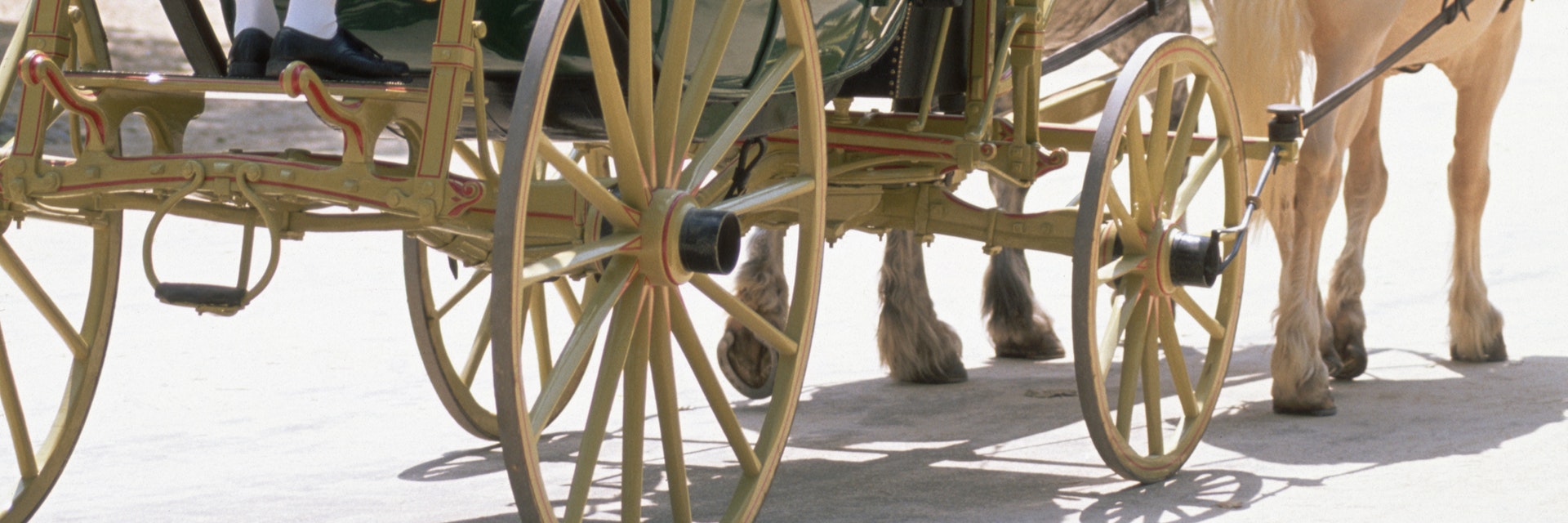Image by Thomas Faull/Getty Images RF
The restored capital of England’s largest colony in the New World is a must-see attraction for visitors of all ages. Colonial Williamsburg is a living, breathing, working history museum in Virginia, with a painstakingly-researched environment that brilliantly evokes 1700s America.
It contains 88 original 18th-century buildings and several hundred faithful reproductions, as well as an impressive museum complex. Townsfolk and ‘interpreters’ in period dress go about their colonial jobs, emulating daily life. Laudably, the park doesn't gloss over America's less glorious moments. Today's re-enactors debate and question slavery (52% of the population of 18th-century Williamsburg were slaves), women’s suffrage, the rights of indigenous Americans and whether or not it is even moral to engage in revolution.
You can even stay in colonial houses at the center of the Historic Area for a fully-immersive experience.
History of Colonial Williamsburg
Williamsburg was founded as the capital of the Virginia Colony in 1699 and was Britain’s largest settlement in the New World. It was named after England's reigning monarch, King William III, and was the center of the religious, economic and social life of the state. It was also a center of political activity during the American Revolution. The capital of Virginia was moved to Richmond following the Declaration of Independence from Britain in 1776, and Williamsburg entered a long period of stagnation and decay.
The Reverend William Archer Rutherfoord Goodwin began the preservation and restoration effort that resulted in the creation of Colonial Williamsburg in the 1920s. The Episcopal priest and historian did so by obtaining the support and major financial commitment of John D. Rockefeller Jr., the wealthy son of the founder of the Standard Oil monopoly. The restoration and recreation of Colonial Williamsburg was seen by the city as a way to celebrate rebel patriots and the early history of the US.
What to do at Colonial Williamsburg
You’ll feel as if you've traveled back in time in the Historic Area, where most original buildings, homes and shops have been reconstructed on their original foundations. Prominent buildings include the Capitol, the Governor's Palace, the Courthouse, the Raleigh Tavern and the Magazine.
You’ll see rare animal breeds and lovingly-restored gardens that add to the authenticity of the experience. You can also take a leisurely carriage-ride ride through the area by horse-drawn carriage.
The Art Museums are well worth a visit, with colorful and whimsical folk art made by amateur artisans on display at the Abby Aldrich Rockefeller Folk Art Museum, and objects that are both useful and beautiful in The DeWitt Wallace Decorative Arts Museum.
The Arboretum will appeal to nature-lovers as it features 25 period species of oak trees and more than 30 historic gardens. As well as the regular attractions, Colonial Williamsburg puts on special programming for holidays and commemorative seasons throughout the year.
Tickets and other practicalities
Colonial Williamsburg is located in Williamsburg, Virginia, and is part of Virginia's Historic Triangle, which includes Jamestown, Williamsburg and Yorktown. Amtrak serves the Williamsburg Transportation Center with a connecting train from Washington, DC. The center is just blocks from the Historic Area and offers car rentals and taxi service.
Park for free at the Visitor Center and take the complimentary shuttle to the Historic Area or walk along the tree-lined footpath. There is also free parking at the Art Museums. A program detailing the day’s events will be given to you with your ticket, which helps when planning your time at the site.
Walking around the historic district and patronizing the shops and taverns is free, but entry to building tours and most exhibits is restricted to ticket holders. Single-day tickets cost $44.99 and children aged 6-12 pay $24.99, and they allow visitors to access a selection of guided sites, historic trades and gardens, as well as staged performances on the Charlton Stage and in the Hennage Auditorium and Art Museums. Three-day tickets cost $54.99 with children aged 6-12 paying $29.99 and all tickets can be booked online here.
Expect crowds and lines, especially in summer. There are a number of taverns and a bakery where visitors can dine, and there's also a bakery in the Art Museums.
Where to stay
Colonial Williamsburg has several options for on-site accommodation, including four hotels - Williamsburg Inn, Williamsburg Lodge, Williamsburg Woodlands Hotel & Suites and Griffin Hotel. Visitors can also stay at Colonial Homes in the heart of the Historic Area, which have been reproduced to be true to the time period of Colonial America.
Accessibility at Colonial Williamsburg
Discounted admission tickets are available at on-site ticketing centers, and the Visitor Center, hotels, restaurants, museums and shops are largely accessible. Interpreters in the Historic Area can provide directions to accessible areas, and special parking arrangements can be made, as needed. Colonial Williamsburg’s shuttle buses are wheelchair accessible.
Folding wheelchairs may be rented from the Visitor Center. While ramps and wheelchair lifts are available at selected exhibitions, many of the historic buildings require at least a few steps. Visitors with disabilities may request reasonable accommodations or modifications to assist them in accessing Colonial Williamsburg’s programs, services and facilities.
Headsets with adjustable volume control are available for programs in the Hennage Auditorium of the Art Museums. Colonial Williamsburg will contract a signing interpreter to accompany hearing-impaired guests through the Historic Area, and requests for this service must be made at least two weeks in advance. Further information on accessibility can be found here.








